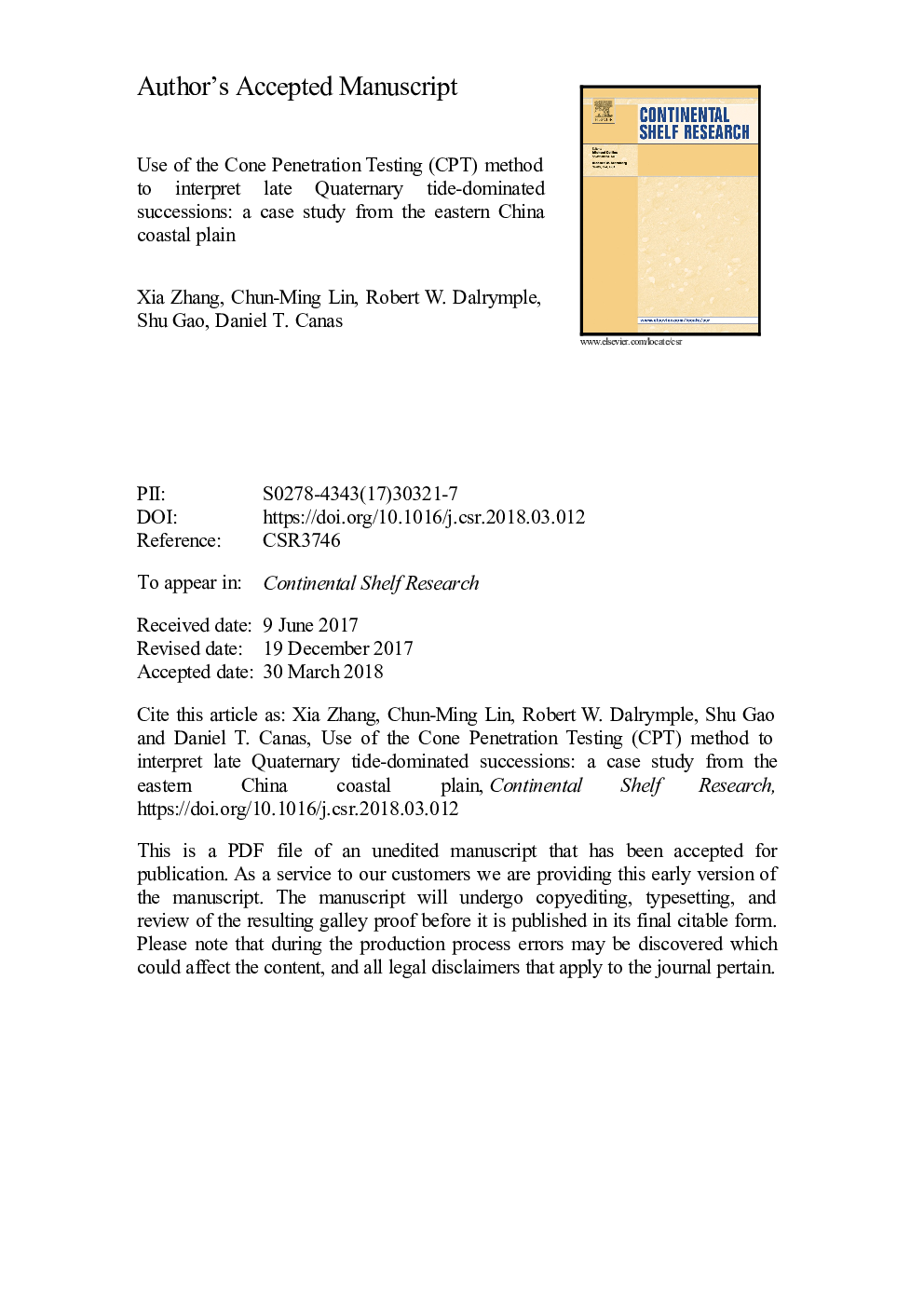| Article ID | Journal | Published Year | Pages | File Type |
|---|---|---|---|---|
| 8884044 | Continental Shelf Research | 2018 | 31 Pages |
Abstract
We evaluate the applicability of cone penetration testing (CPT), calibrated using adjacent cores, as a tool for the sedimentological and stratigraphic examination of late Quaternary tide-dominated successions in the eastern China coastal plain. The results indicate that the sedimentary facies and sequence-stratigraphic surfaces can be readily distinguished using CPT profiles in the Qiantang River incised-valley system because of their distinctive mechanical behavior. The lithologic character of the various facies, which is controlled mainly by sediment supply, dynamic processes and post-depositional diagenesis, is the key factor affecting how well the CPT technique works. Within this particular macrotidal environment, which is dominated by non-cohesive sand and silt in the tidal channels, the accumulation of fluid mud is rare. Consequently, the tidal-channel deposits exhibit the geotechnical properties of coarse-grained sediments, and can be easily distinguished from the mud-dominated facies. However, in the nearby Changjiang delta system which is characterized by very high suspended-sediment concentrations and an abundance of fine-grained cohesive sediments, the presence of channel-bottom fluid muds makes it difficult to recognize channel deposits, because of the lack of a sharp lithologic contrast at their base. Consequently, the CPT method might not be as universally effective in tide-dominated systems as it appears to be in wave-dominated settings. Care is needed in the interpretation of the results from tide-dominated successions because of the widespread presence of fluid muds, the heterolithic nature of tidal deposits, the rheological similarity between adjacent facies, and the averaging of geotechnical properties between the alternating finer and coarser layers.
Related Topics
Physical Sciences and Engineering
Earth and Planetary Sciences
Geology
Authors
Xia Zhang, Chun-Ming Lin, Robert W. Dalrymple, Shu Gao, Daniel T. Canas,
